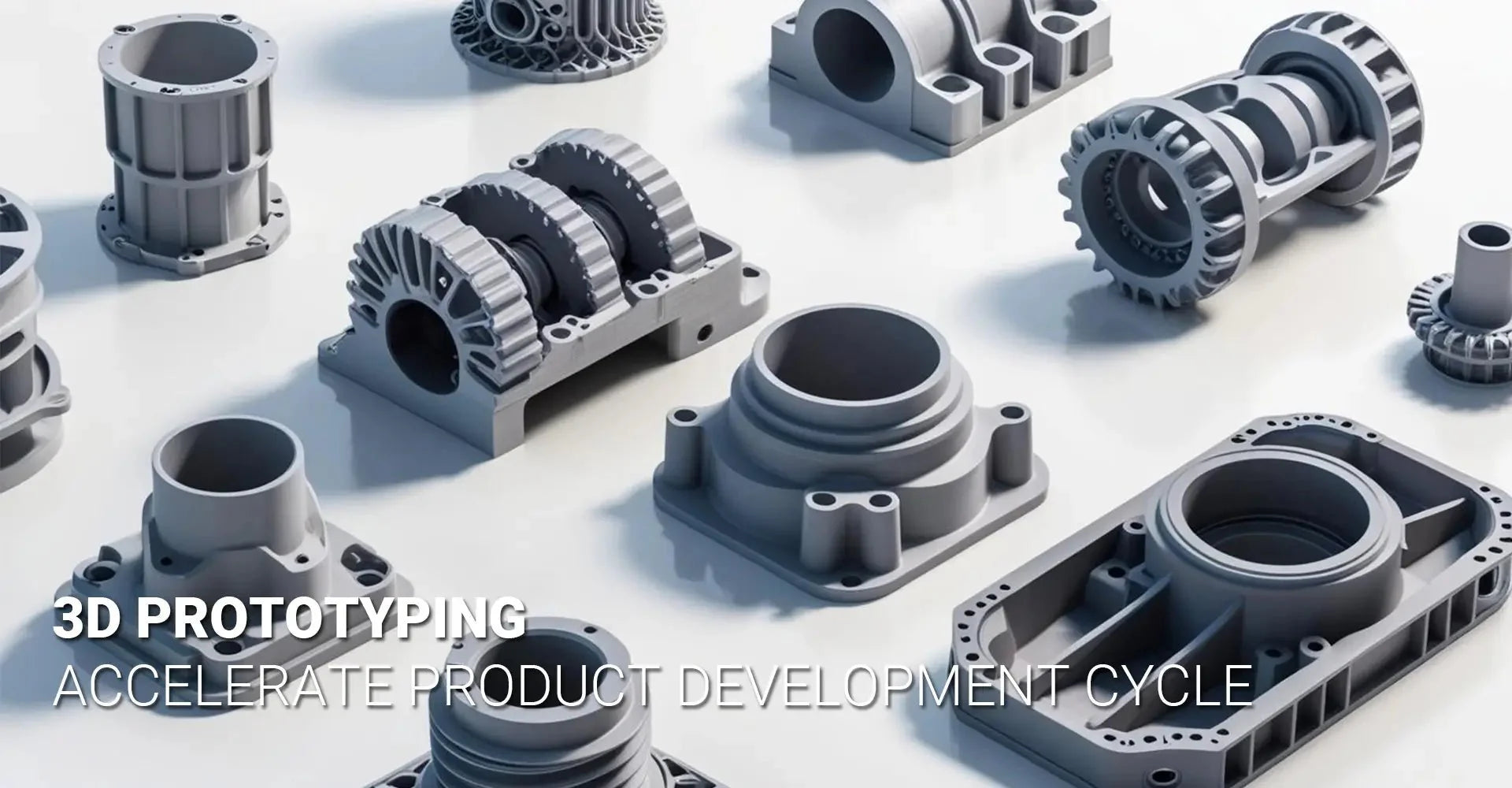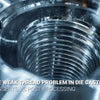How Can 3D Prototyping Accelerate Your Product Development Cycle?

How Can 3D Prototyping Accelerate Your Product Development Cycle?

In today's competitive marketplace, bringing products from concept to reality quickly can make or break business success. 3D prototyping stands at the forefront of this acceleration, enabling companies across industries to visualize, test, and refine designs with unprecedented speed. With advancements in technology making these tools more accessible than ever, understanding how to leverage 3D prototyping effectively has become crucial for product developers and manufacturers alike.
Did you know that companies implementing 3D prototyping report cutting development timelines by up to 70% while reducing tooling expenses by over 50%? This powerful combination of time and cost savings explains why the global 3D printing market continues to expand rapidly, with industrial applications leading the charge despite temporary setbacks in 2024.
Whether you're new to 3D prototyping or looking to enhance your existing processes, this comprehensive guide will walk you through the latest trends, practical applications, and strategic approaches to maximize your investment in this technology. Let's explore how 3D prototyping can transform your product development workflow and deliver tangible business results.
Table of Contents
- What Are the Latest Trends Shaping 3D Prototyping in 2025?
- How Does 3D Prototyping Deliver ROI Across Different Business Sizes?
- Which Industries Are Benefiting Most From 3D Prototyping Applications?
- What Materials and Design Considerations Are Critical for Successful Prototyping?
- Conclusion
What Are the Latest Trends Shaping 3D Prototyping in 2025?
The 3D prototyping landscape is evolving at a remarkable pace, with several key trends defining its trajectory in 2025. These developments are not just technical improvements but represent fundamental shifts in how companies approach the prototyping process. Understanding these trends can help you stay ahead of the curve and make informed decisions about your prototyping strategy.
AI-driven design tools now automatically suggest improvements to parts while reducing material usage by up to 30%. Meanwhile, hybrid manufacturing combining 3D printing with traditional CNC machining is gaining traction, with industry projections showing a 19% growth in industrial 3D printer adoption for 2025, reversing the 15% decline observed in early 2024.

The integration of artificial intelligence into 3D prototyping workflows represents perhaps the most significant advancement. These systems analyze designs for structural integrity, material efficiency, and manufacturability—suggesting improvements that human designers might miss. Additionally, industrial-scale metal prototyping continues to grow, particularly in China, with global expansion expected throughout 2025. Companies adopting these technologies report not only faster development cycles but also more innovative products that better meet customer needs and manufacturing requirements. The convergence of 3D printing with traditional industrial machinery is creating powerful hybrid solutions that combine the flexibility of additive manufacturing with the precision of subtractive processes.
How Does 3D Prototyping Deliver ROI Across Different Business Sizes?
The business case for 3D prototyping has never been stronger, with companies of all sizes reporting significant returns on investment. However, the specific benefits and implementation strategies vary widely depending on organizational needs, industry requirements, and scale of operations.
Case studies demonstrate the tangible financial impact: H&T Presspart achieved an impressive 80% cost reduction for adapter components by implementing DLP technology. Even smaller companies report breaking even on their 3D printing investments within 3-6 months, primarily through eliminated outsourcing costs and accelerated time-to-market advantages.
Beyond the direct cost savings, 3D prototyping delivers additional value through risk reduction. By identifying design flaws early in development, companies avoid expensive tooling changes and production delays. This approach also enables more iterative design processes, where multiple versions can be tested simultaneously. For startups and smaller businesses, desktop 3D printers providing professional-grade results have democratized access to prototyping capabilities that were once available only to large corporations with substantial R&D budgets. The scalability of modern 3D printing solutions means businesses can start with modest investments and expand their capabilities as their prototyping needs grow, making this technology accessible across the entire business spectrum.
Which Industries Are Benefiting Most From 3D Prototyping Applications?
While 3D prototyping offers advantages across virtually all manufacturing sectors, certain industries have emerged as particularly enthusiastic adopters. These sectors typically face unique challenges that 3D prototyping addresses effectively, such as complex geometries, customization requirements, or high material costs.
Aerospace companies utilize 3D prototyping to create lightweight, high-performance components that would be impossible to manufacture with traditional methods. In the medical field, customized prosthetics and surgical tools can be rapidly prototyped to patient-specific dimensions. Automotive manufacturers leverage these technologies for both functional prototyping and increasingly for end-use parts in production vehicles.

Beyond these leading sectors, consumer electronics manufacturers use 3D prototyping to test ergonomics and design aesthetics before committing to production tooling. Architectural firms create detailed scale models that communicate complex designs to clients. Even the jewelry industry has embraced these technologies for creating intricate designs with minimal material waste. The common thread across these applications is the ability to quickly translate digital designs into physical objects that can be evaluated, tested, and refined—often through multiple iterations within timeframes that would be impossible using conventional manufacturing methods. The automotive industry in particular has pioneered ways to integrate 3D prototyping throughout the product development cycle, from initial concept models to functional testing prototypes and even production jigs and fixtures.
What Materials and Design Considerations Are Critical for Successful Prototyping?
The expanding range of available materials has dramatically increased the versatility and functionality of 3D prototyped parts. Selecting the right material for your specific application is crucial, as it directly impacts not only the physical properties of your prototype but also the printing process, post-processing requirements, and overall project timeline.
Metal 3D printing continues to dominate high-performance sectors, with aluminum, titanium, and specialized steel alloys leading adoption. Meanwhile, sustainable polymers and advanced resins are revolutionizing plastic prototyping, offering properties ranging from flexibility and transparency to heat resistance and biocompatibility—all crucial factors in creating functional prototypes that accurately represent final products.

Equally important to material selection are design considerations that optimize for the 3D printing process. Geometries should minimize overhangs requiring support structures, which can compromise surface finish and increase post-processing time. Wall thickness must be carefully calculated to prevent warping while maintaining structural integrity. Tolerances for assembled parts require special attention, as they may differ from traditional manufacturing methods. Designers who understand these constraints can create models that not only print successfully but also accurately represent the intended final product—balancing resolution, material properties, and production requirements for optimal results. The evolution of 3D printing plastics has been particularly impressive, with new formulations offering mechanical properties that rival traditional engineering materials while maintaining the design freedom that makes 3D printing so valuable.
Conclusion
The integration of 3D prototyping into product development workflows represents a fundamental shift in how companies bring ideas to market. By drastically reducing development time and costs while enabling more innovative designs, this technology offers competitive advantages that are increasingly difficult to ignore. As we've explored, from AI-enhanced design to material innovations and cross-industry applications, 3D prototyping continues to evolve in ways that make it more valuable and accessible.
Companies that strategically implement these technologies—selecting appropriate materials, optimizing designs for the printing process, and integrating prototyping throughout their development cycle—position themselves to respond more quickly to market demands and customer needs. Whether you're a startup creating your first proof-of-concept or an established manufacturer looking to streamline production, embracing 3D prototyping methodologies offers a clear path to more efficient, cost-effective, and innovative product development.
External Links Recommendation
[3D Prototyping](https://markforged.com/resources/blog/understanding-rapid-prototyping-with-3d-printing)[^1]
[3D Printing in rapid prototyping](https://markforged.com/resources/blog/understanding-rapid-prototyping-with-3d-printing)[^2]
[Additive Manufacturing](https://mitsloan.mit.edu/ideas-made-to-matter/additive-manufacturing-explained)[^3]
---
[^1]: Explore the applications of 3D Prototyping in various industries and how it can benefit your projects.
[^2]: Discover how 3D printing revolutionizes rapid prototyping, enhancing speed and efficiency in product development.
[^3]: Learn about Additive Manufacturing, its processes, and its impact on modern manufacturing techniques.
-
Posted in
3D Printing





